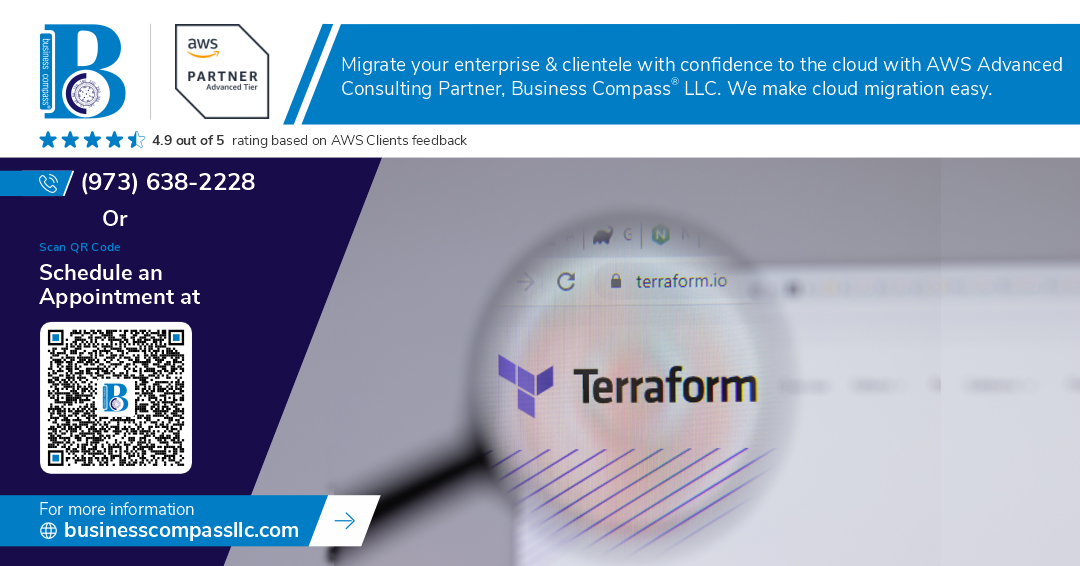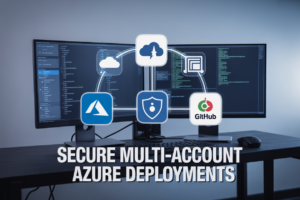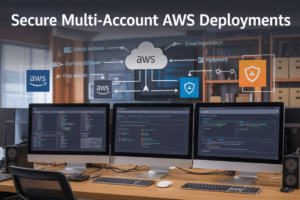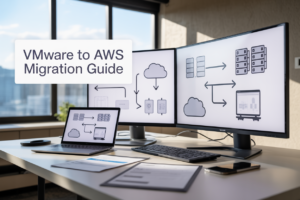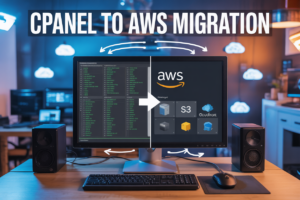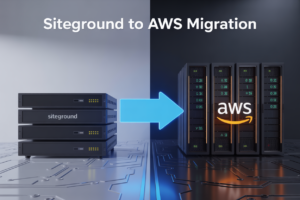DevOps engineers, cloud architects, and development teams constantly need reliable ways to deploy and manage Jenkins servers on AWS without the manual headaches. Infrastructure automation with Terraform solves this problem by letting you define your Jenkins deployment as code, making it repeatable, scalable, and version-controlled.
This guide is designed for DevOps professionals and developers who want to master Terraform AWS infrastructure automation while setting up production-ready Jenkins environments. You’ll learn practical techniques for AWS infrastructure as code that eliminate manual deployment errors and speed up your CI/CD pipeline setup.
We’ll walk through building robust Terraform configuration files that handle everything from VPC setup to security groups for your Jenkins deployment automation. You’ll discover how to automate Jenkins installation and configuration using Terraform’s provisioning capabilities, plus learn essential strategies for managing and scaling your infrastructure as your team grows. Finally, we’ll cover security best practices and maintenance workflows to keep your Terraform-managed Jenkins setup running smoothly in production.
By the end, you’ll have a complete AWS DevOps automation workflow that makes deploying and managing Jenkins servers as simple as running a few Terraform commands.
Understanding Terraform for AWS Infrastructure Management
Core benefits of infrastructure as code approach
Infrastructure as code transforms how you manage cloud resources by treating infrastructure like software. This approach eliminates manual configuration errors, ensures consistent deployments across environments, and provides complete version control for your AWS infrastructure. You can track changes, roll back problematic deployments, and collaborate effectively with your team. The declarative nature means you describe what you want rather than how to build it, making AWS infrastructure as code both predictable and repeatable. Your entire infrastructure becomes auditable, documented, and easily reproducible across development, staging, and production environments.
Terraform’s advantage over manual AWS console management
Manual AWS console management becomes a nightmare as your infrastructure grows. Clicking through multiple screens, remembering configuration details, and maintaining consistency across environments leads to human errors and inconsistent setups. Terraform AWS infrastructure management eliminates these pain points by providing automated, consistent deployments every time. You can spin up identical environments in minutes, compare configurations between environments, and avoid the dreaded “it works on my machine” syndrome. The terraform state file keeps track of all resources, preventing orphaned infrastructure that burns through your AWS budget unnecessarily.
Key Terraform concepts for AWS deployments
Terraform operates through several core concepts that make AWS cloud infrastructure management seamless. Resources represent actual AWS services like EC2 instances, VPCs, or security groups. Providers handle the communication with AWS APIs, while variables make your configurations flexible and reusable. The state file tracks your infrastructure’s current status, enabling Terraform to calculate what changes need to happen during updates. Modules organize your code into reusable components, perfect for standardizing Jenkins server deployment patterns. Data sources pull information from existing AWS resources, allowing you to reference existing infrastructure in your configurations.
Setting up Terraform with AWS provider configuration
Getting started with Terraform on AWS requires proper provider configuration and credentials setup. Install Terraform locally, then configure AWS credentials using IAM access keys, environment variables, or AWS CLI profiles. The AWS provider block specifies which region and version to use for your deployments. Create a simple terraform configuration file with provider settings, then run terraform init to download necessary plugins. Your Infrastructure automation tools setup is complete once you can successfully run terraform plan and see the proposed changes. This foundation supports complex Terraform Jenkins configuration deployments and other AWS services.
Preparing Your AWS Environment for Jenkins Deployment
Essential AWS services required for Jenkins infrastructure
Getting your Jenkins infrastructure right on AWS means understanding which services work together seamlessly. You’ll need EC2 instances as your primary compute foundation, paired with Application Load Balancers to distribute traffic across multiple Jenkins nodes. S3 buckets serve as reliable storage for build artifacts and backup configurations, while RDS provides managed database services for Jenkins metadata. CloudWatch handles monitoring and logging, giving you visibility into performance metrics and system health. Route 53 manages DNS routing, and Auto Scaling Groups automatically adjust capacity based on workload demands.
Configuring IAM roles and security policies
Security starts with proper IAM configuration that follows the principle of least privilege. Create dedicated service roles for your Jenkins EC2 instances with specific permissions for accessing S3 buckets, CloudWatch logs, and other AWS services your CI/CD pipelines require. Set up cross-account roles if you’re deploying to multiple AWS environments. User policies should restrict access to Jenkins management functions, while service-linked roles handle automated scaling operations. Policy documents need regular auditing to remove unused permissions and add new ones as your infrastructure grows.
Setting up VPC and networking components
Your VPC architecture forms the backbone of secure Jenkins deployment. Design a multi-AZ setup with public subnets for load balancers and private subnets for Jenkins masters and agents. Internet Gateways provide outbound access for software updates, while NAT Gateways enable secure internet access from private subnets. Security groups act as virtual firewalls, controlling inbound traffic on specific ports like 8080 for Jenkins web interface and 50000 for agent communication. Network ACLs add an extra security layer at the subnet level. VPC Endpoints reduce data transfer costs by keeping AWS service communication within your network.
Choosing optimal EC2 instance types for Jenkins workloads
Jenkins performance depends heavily on matching instance types to workload characteristics. Master nodes benefit from memory-optimized instances like m5.large or m5.xlarge, providing sufficient RAM for managing multiple concurrent builds. Compute-optimized instances such as c5.large work well for build agents handling CPU-intensive compilation tasks. For distributed builds with heavy I/O operations, consider storage-optimized instances with NVMe SSD storage. Spot instances can reduce costs for non-critical build agents, while Reserved Instances offer savings for predictable master node workloads. Memory requirements scale with the number of plugins and concurrent jobs your Jenkins instance handles.
Building Terraform Configuration Files for Jenkins Infrastructure
Creating modular Terraform code structure
Break your Terraform Jenkins configuration into reusable modules for better organization and maintenance. Create separate directories for networking, compute, and security components. This modular approach makes your Terraform AWS infrastructure scalable and allows teams to reuse components across different environments. Structure your code with main.tf for resource definitions, variables.tf for inputs, and outputs.tf for return values.
Defining AWS resources with Terraform syntax
Define your Jenkins server using the aws_instance resource block with appropriate AMI selection and instance sizing. Configure your Terraform Jenkins configuration to include elastic load balancers, auto-scaling groups, and VPC components. Use data sources to reference existing AWS resources and leverage Terraform’s HCL syntax for dynamic resource creation. This Infrastructure automation approach ensures consistent deployments across development, staging, and production environments.
Implementing security groups and network access controls
Design restrictive security groups that allow only necessary traffic to your Jenkins deployment automation setup. Configure inbound rules for HTTP/HTTPS access on ports 80 and 443, SSH access on port 22 from specific IP ranges, and Jenkins web interface on port 8080. Create separate security groups for different tiers – web, application, and database layers. Your AWS DevOps automation strategy should include network ACLs and proper subnet isolation for enhanced security posture.
Configuring storage and backup solutions
Provision EBS volumes for persistent Jenkins data storage and configure automated snapshots for disaster recovery. Your Terraform configuration files should include S3 buckets for artifact storage and backup retention policies. Set up CloudWatch monitoring and logging to track your Jenkins CI/CD AWS infrastructure performance. Implement cross-region replication for critical Jenkins configurations and use AWS infrastructure as code principles to ensure your storage solutions are version-controlled and reproducible across environments.
Automating Jenkins Installation and Configuration
Using User Data Scripts for Automated Jenkins Setup
User data scripts transform your Terraform Jenkins configuration into a fully automated deployment solution. These scripts execute during EC2 instance launch, installing Java, downloading Jenkins, and configuring initial system requirements. Your Terraform configuration files can embed these scripts directly, ensuring consistent deployments across environments. The automation eliminates manual setup steps while maintaining Infrastructure as code principles for your AWS DevOps automation pipeline.
Configuring Jenkins Plugins and Initial Settings
Pre-configuring Jenkins plugins through automation saves hours of manual setup work. Use Jenkins Configuration as Code (JCasC) within your user data scripts to define plugin installations, security settings, and tool configurations. This approach ensures your Jenkins server deployment maintains consistent configurations across development, staging, and production environments. Store configuration files in version control alongside your Terraform configuration files for complete infrastructure traceability.
Setting up SSL Certificates and Domain Configuration
SSL certificate automation integrates seamlessly with AWS Certificate Manager and Route 53 through Terraform resources. Configure Application Load Balancers to terminate SSL connections while routing traffic to your Jenkins instances. Your Terraform AWS infrastructure can automatically request certificates, validate domain ownership, and associate them with load balancers. This setup provides secure HTTPS access to Jenkins while maintaining automated certificate renewal through AWS services.
Implementing Monitoring and Logging Solutions
CloudWatch integration provides comprehensive monitoring for your Terraform-managed Jenkins setup without additional infrastructure complexity. Configure CloudWatch agents through user data scripts to collect Jenkins logs, system metrics, and application performance data. Set up automated alerts for disk usage, memory consumption, and build queue lengths. Your AWS cloud infrastructure management becomes proactive rather than reactive, with automated scaling policies responding to monitoring thresholds and ensuring optimal Jenkins CI/CD AWS performance.
Managing and Scaling Your Jenkins Infrastructure
Version controlling your Terraform configurations
Store your Terraform AWS infrastructure code in Git repositories with proper branching strategies. Use semantic versioning for infrastructure releases and implement pull request workflows for code reviews. Tag stable configurations and maintain separate environments through branch-based deployments. This approach ensures reproducible Jenkins deployment automation and tracks infrastructure changes effectively.
Implementing blue-green deployment strategies
Deploy Jenkins instances across multiple AWS availability zones using Terraform configuration files to enable zero-downtime updates. Create duplicate infrastructure environments where traffic switches between blue and green deployments. Configure Application Load Balancers to route traffic seamlessly during updates. This strategy minimizes downtime while maintaining continuous integration workflows and provides quick rollback capabilities.
Auto-scaling Jenkins agents for optimal performance
Configure AWS Auto Scaling Groups through Terraform to dynamically adjust Jenkins agent capacity based on build queue demands. Set up CloudWatch metrics to monitor CPU utilization and queue length, triggering automatic scaling events. Use spot instances for cost-effective scaling while maintaining on-demand instances for critical workloads. This ensures optimal resource allocation during peak development cycles.
Cost optimization techniques for long-running infrastructure
Implement scheduled scaling policies to reduce infrastructure costs during off-peak hours when development teams aren’t actively building. Use AWS Cost Explorer integration with Terraform to track spending patterns and optimize instance types. Configure lifecycle policies for EBS volumes and implement intelligent tiering for S3 storage used by Jenkins artifacts, significantly reducing operational expenses.
Securing and Maintaining Your Terraform-Managed Jenkins Setup
Implementing least privilege access principles
Securing your Terraform-managed Jenkins setup starts with strict IAM policies that grant only necessary permissions. Create dedicated service accounts for Jenkins with minimal AWS permissions, separating build-time access from runtime operations. Use Terraform to define specific IAM roles that restrict Jenkins agents to required S3 buckets, ECR repositories, and deployment targets while blocking administrative functions.
Regular backup and disaster recovery procedures
Automate Jenkins backup processes through Terraform configuration files that schedule regular snapshots of EBS volumes and configuration data. Create cross-region replication for critical Jenkins artifacts and implement automated restore procedures using Terraform modules. Store backup configurations in version control alongside your infrastructure code, enabling rapid disaster recovery with consistent AWS infrastructure deployment across availability zones.
Monitoring infrastructure drift and compliance
Deploy CloudWatch monitoring and AWS Config rules through Terraform to detect unauthorized changes to your Jenkins infrastructure. Set up automated alerts when resources deviate from desired state configurations, and implement scheduled Terraform plan operations to identify drift before it impacts operations. Use AWS Systems Manager to track compliance with security baselines and automatically remediate common configuration issues.
Troubleshooting common deployment issues
Common Jenkins deployment failures often stem from security group misconfigurations or insufficient IAM permissions in Terraform AWS infrastructure. Debug connectivity issues by checking VPC routing tables and NAT gateway configurations defined in your Terraform configuration files. When Jenkins agents fail to connect, verify subnet associations and ensure proper tagging for auto-discovery mechanisms in your AWS DevOps automation setup.
Setting up Jenkins on AWS with Terraform gives you a powerful combination that can transform how you manage your development pipeline. You’ve learned how to create reproducible infrastructure, automate the entire Jenkins deployment process, and maintain security best practices. This approach saves countless hours compared to manual setup and gives you the confidence that your infrastructure can be recreated exactly the same way every time.
The real magic happens when you start scaling and maintaining your setup. Your Terraform configurations become living documentation of your infrastructure, making it easy for team members to understand and contribute. Start with a simple Jenkins deployment and gradually add features like auto-scaling, backup automation, and monitoring. Remember to keep your Terraform state files secure and consider using remote backends for team collaboration. Your future self will thank you for taking the time to automate properly from the beginning.










